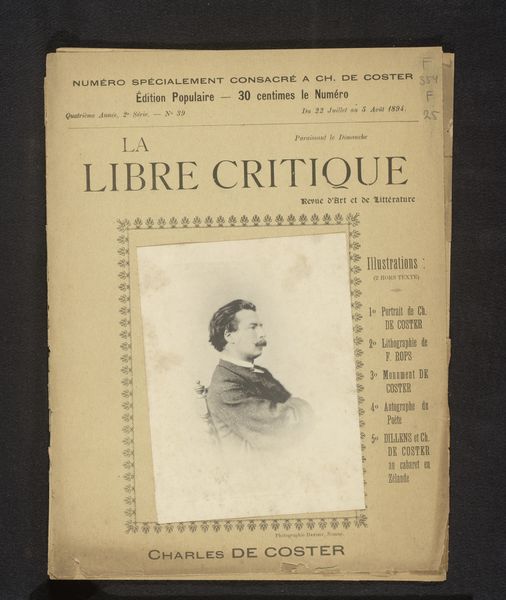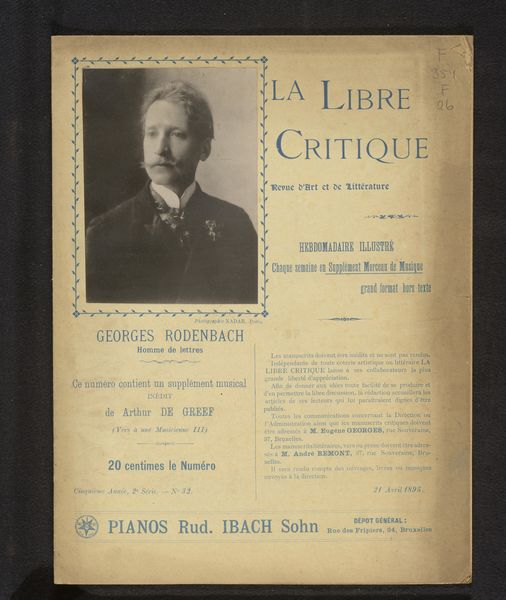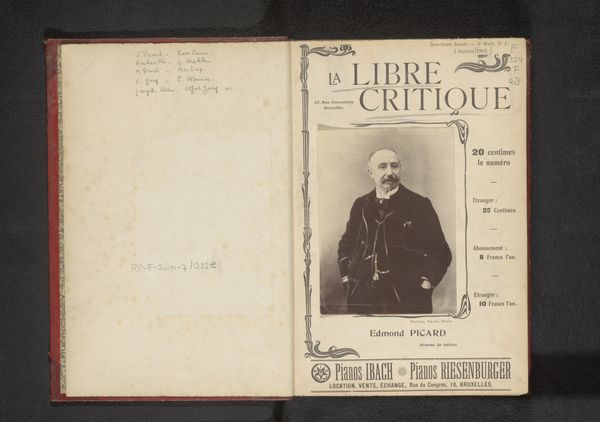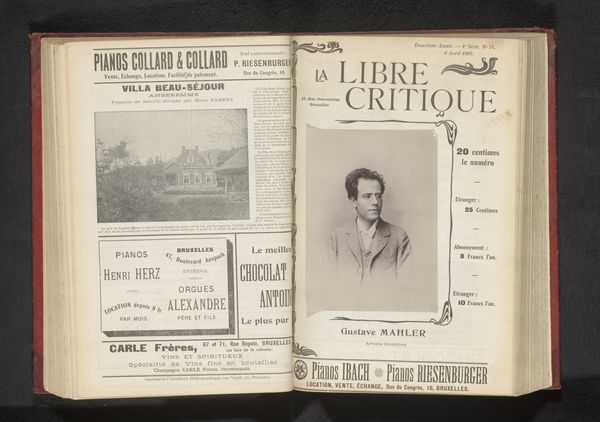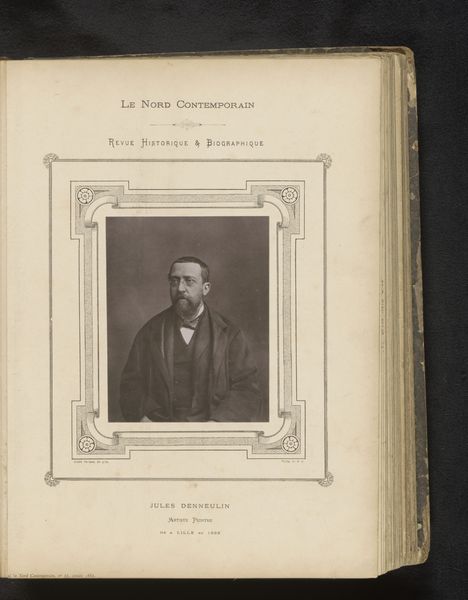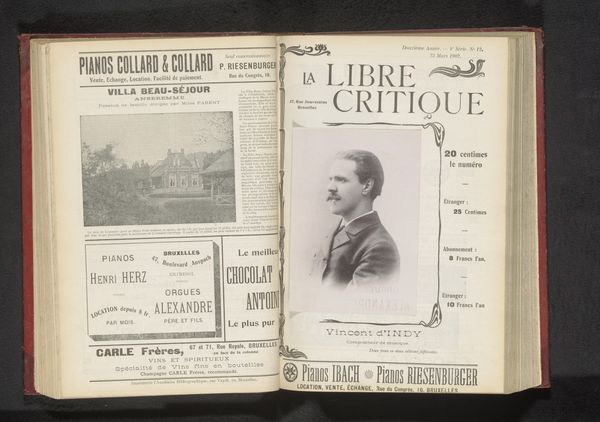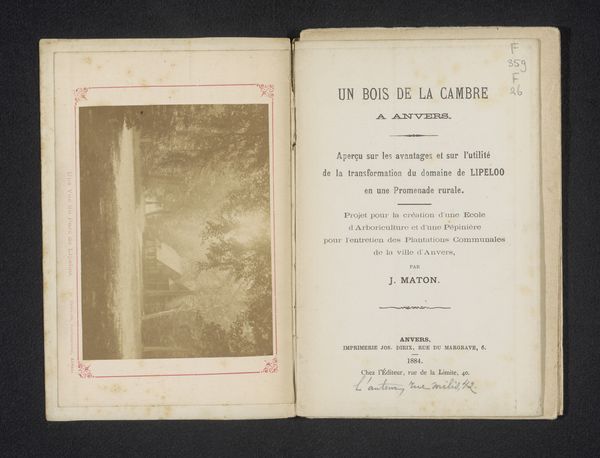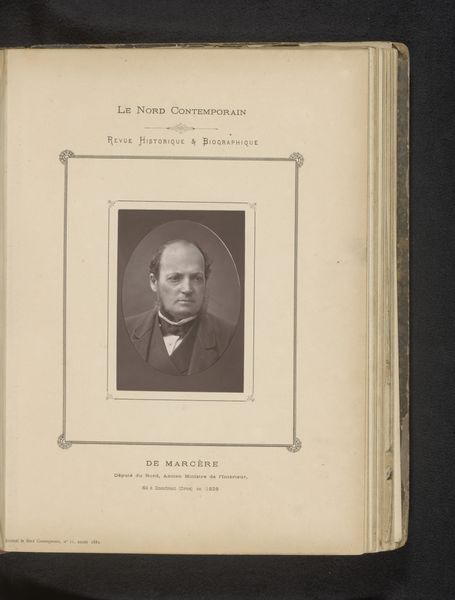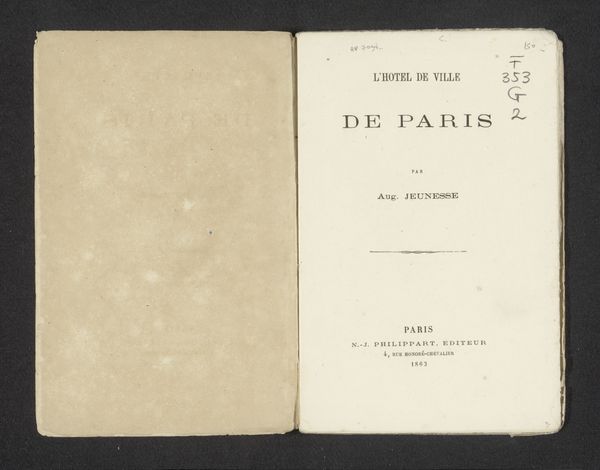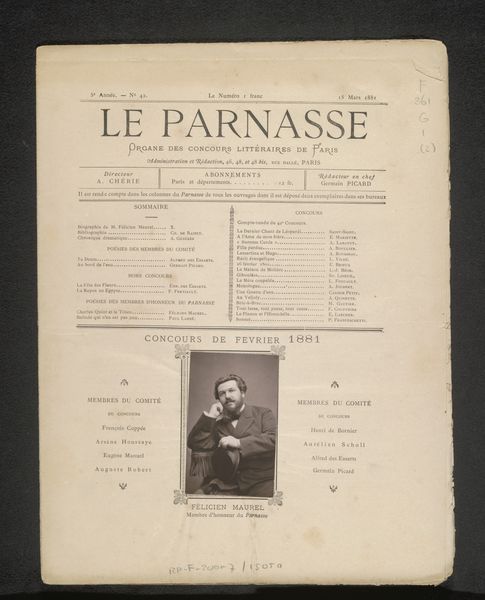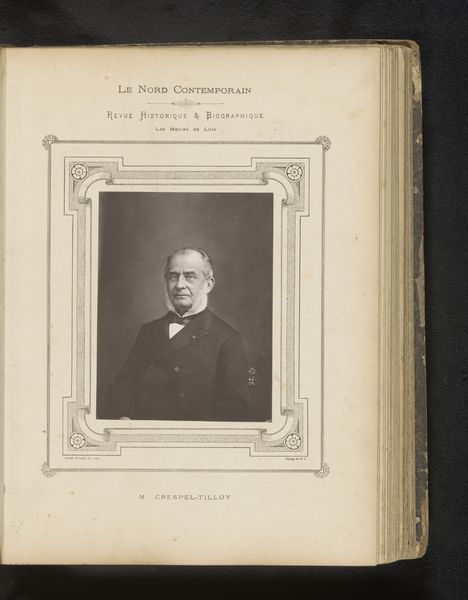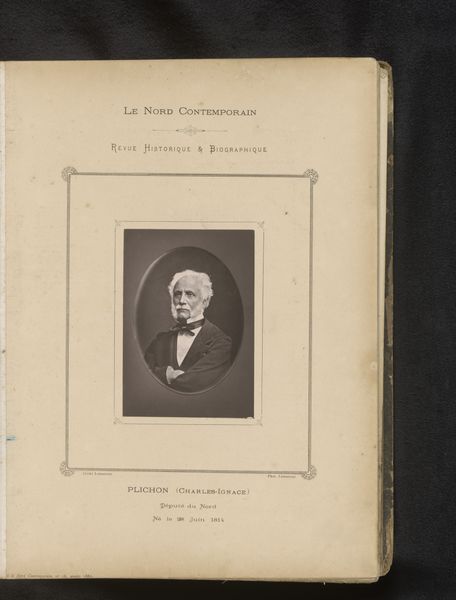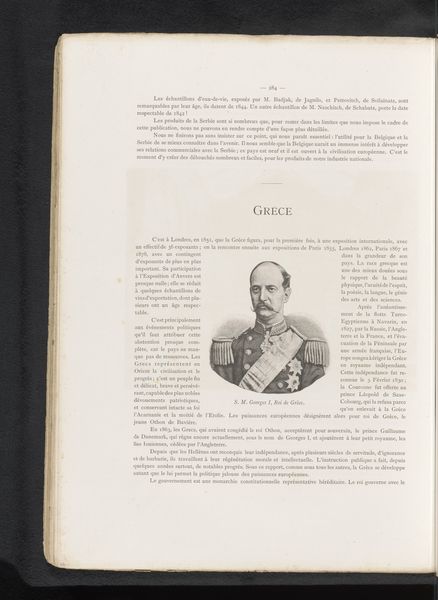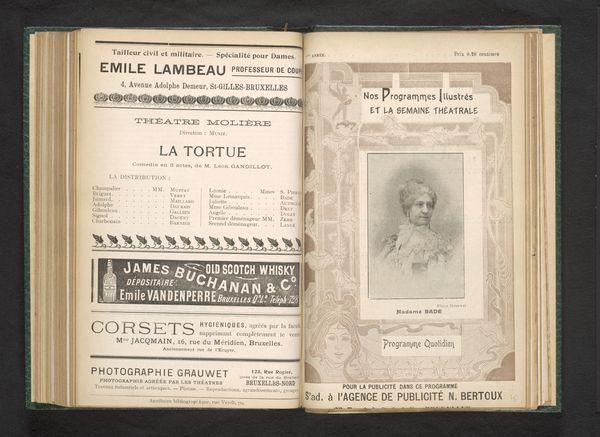
Dimensions: height 158 mm, width 115 mm
Copyright: Rijks Museum: Open Domain
Curator: Standing before us is a photographic print titled "Portret van Edmond Picard," created before 1894. It features a portrait of the prominent Belgian lawyer and writer, Edmond Picard. Editor: Immediately, the composition strikes me. It feels so… reserved, almost academic. The simple paper, the dark ink—there’s a clear statement about process here. Curator: Precisely. Note the visual hierarchy—the name "Edmond Picard" takes a central position. This underscores the significance of his individual identity. Also consider the ornate border surrounding the portrait. The detailed embellishments function to separate Picard from the banality of mass production, paradoxically highlighting his elite social status even on an easily circulated medium. Editor: Speaking of circulation, "La Libre Critique," as inscribed above Picard’s name, indicates that this print was part of a wider periodical publication—accessible, yet potentially framing his image through the lens of literary and artistic criticism. The photography becomes less about pure artistic expression and more about reproduction for the purpose of informing and influencing public opinion. We have to consider the labour involved in producing and disseminating these prints, especially in an era of technological change within publishing. Curator: Yes, and beyond that pragmatic purpose, I’d propose the photograph possesses symbolic gravity through Picard's positioning. His direct gaze creates a palpable sense of authorial command. This, combined with the sharp chiaroscuro effect and careful modulation of shadow and light, emphasizes an internal gravitas of thought. It speaks less of craft than an artistic choice in highlighting specific psychological qualities. Editor: That’s where we might differ. The mass production inevitably affects the 'aura' that Picard may or may not have had. While those lighting techniques might aspire towards revealing character, the inherent processes of reproduction are more down-to-earth and industrial. We see a photograph made for consumption within a magazine or newspaper; the labor that enabled distribution on that scale overshadows considerations of the singular 'genius'. Curator: I appreciate how you connect its creation and its materials. The two distinct lenses let us truly see how complex and contradictory the intent of one portrait might be. Editor: Indeed, by considering the production methods and materiality of such printed matter, we uncover further nuanced stories enmeshed within that era.
Comments
No comments
Be the first to comment and join the conversation on the ultimate creative platform.
